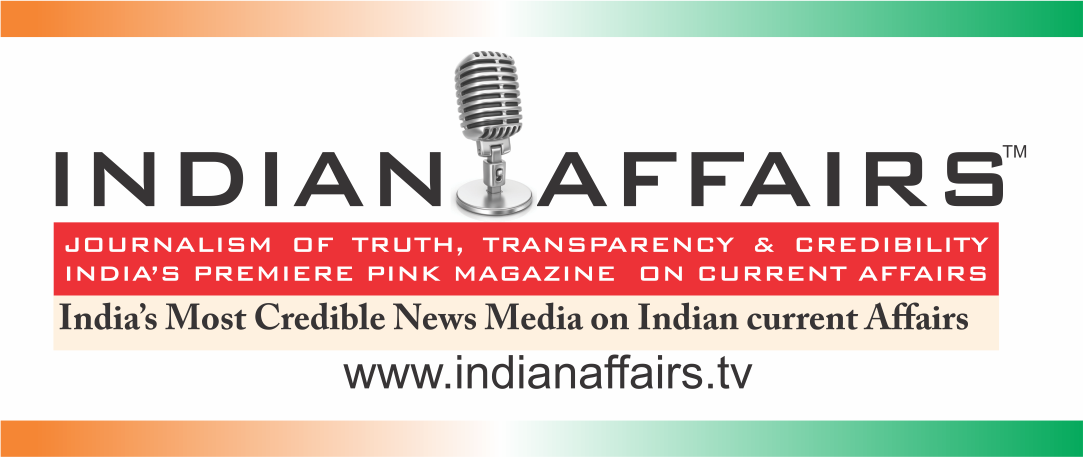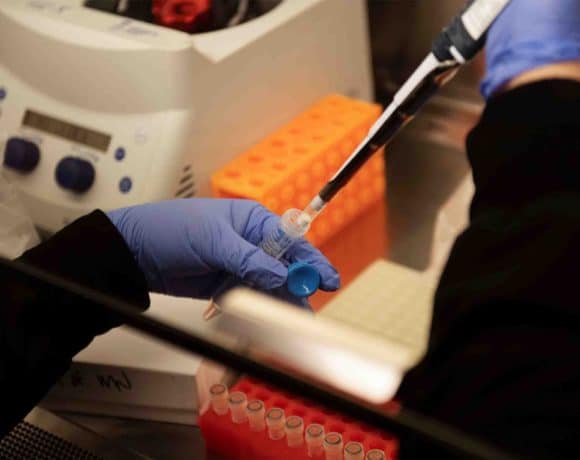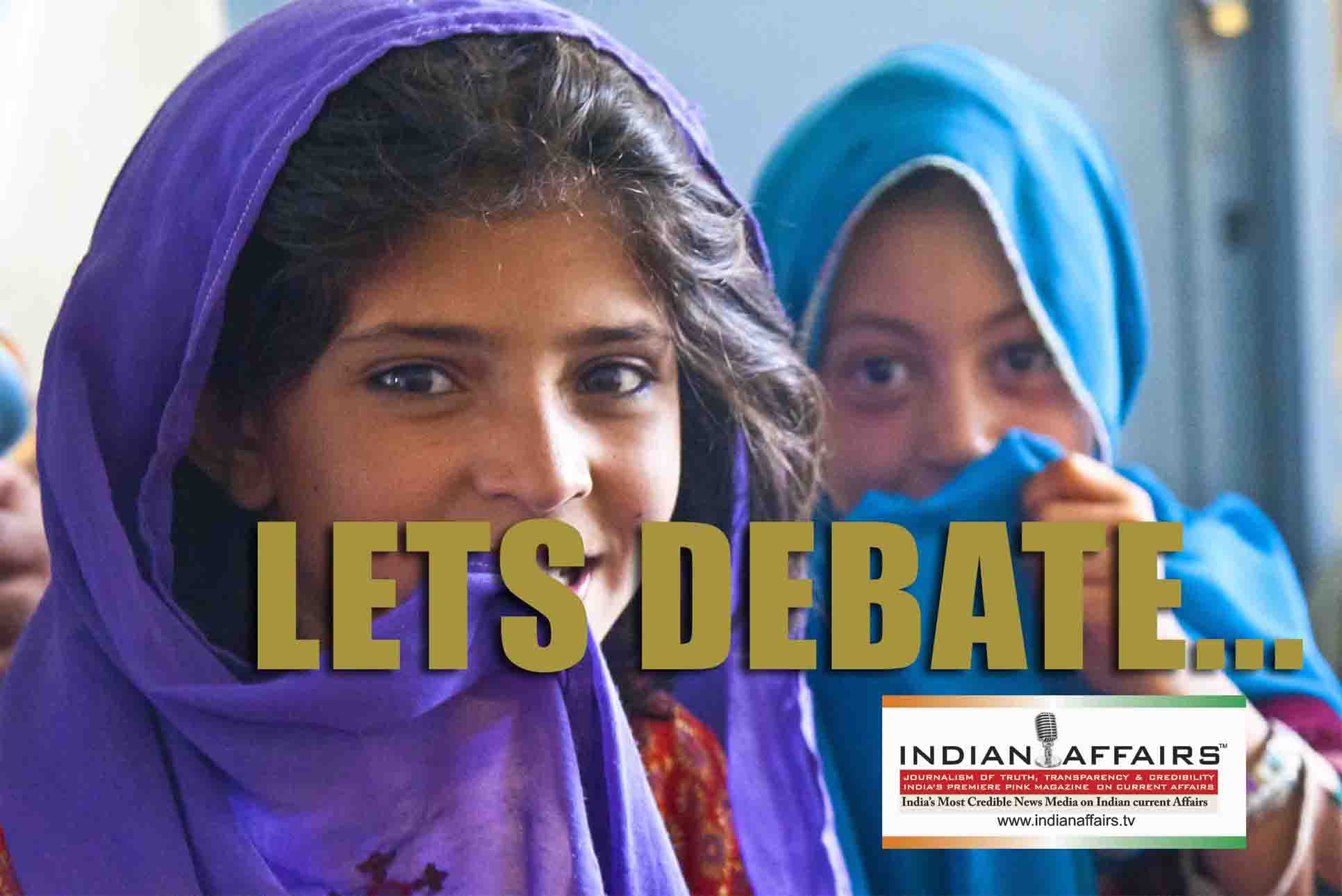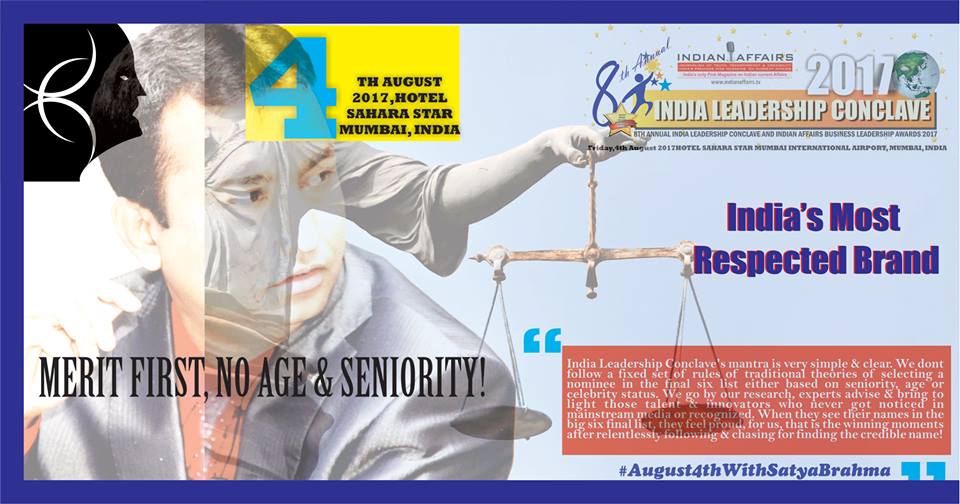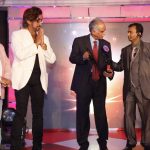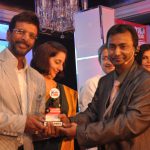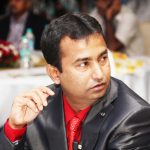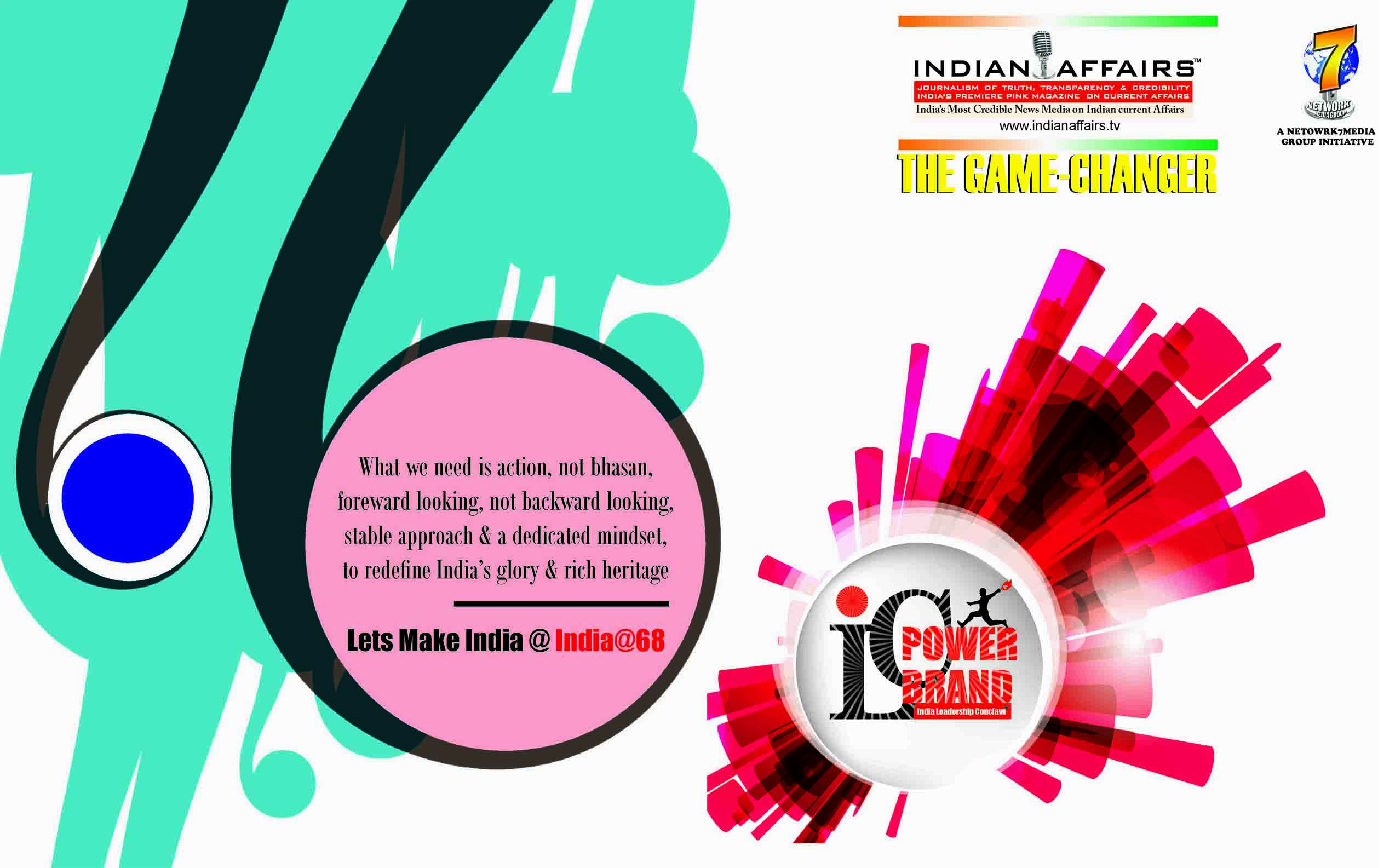

Prime Minister Narendra Modi’s approach to a technology-driven growth, as envisaged in his unveiling a Digital India Week in New Delhi recently, drew serious flak from one of his arch malcontents, Nobel laureate Amartya Sen, who said recently: “I have never been anti-industry but no country can become an industrial giant with an uneducated and unhealthy labour force.”
With only 2.3 per cent of the workforce in India trained in formal skill compared to 68 per cent in the UK, 75 per cent in Germany, 52 per cent in the US, 80 per cent in Japan and 96 per cent in South Korea, Modi’s National Policy for Skill Development and Entrepreneurship 2015 as well as the Pradhan Mantri Kaushal Vikas Yojana (PMKVY) scheme at least address what was long overdue.
Sen’s comment was not exactly in response to the role of digital technology per se, but in a 1999 study titled “Employment Technology & Development”, he did shed much light on the inter-relationship between institutions, technology, and employment. According to the Socio Economic and Caste Census (SECC) 2011 released recently, one out of three families living in villages is landless and depends on manual labour for livelihood and 23.52 per cent rural families have no literate adult above 25 years, suggesting a poor state of education among rural masses.A technologically-illiterate people, the logic goes, will remain at best technology-consumers but not active participators. According to an estimate, some 200 management schools have shut down in the past few years due to poor placement and of the 1.5 million engineering students, over 70 per cent are unemployed, while the top of the cake – the IT sector – withered with 75 per cent of graduates going unemployed – areas supposed to be the forerunners of the digital or technological spectrum.But what use is technology if there are no proper classrooms, committed teachers, and a properly thought-through curriculum in our public education system? What happens to our public hospitals, many of which though equipped with high-tech machines, fail to deliver technology-assisted services either due to poor maintenance, or lack of skilled personnel?
As per the latest National Sample Survey Office (NSSO) figures, around 86 per cent of India’s rural population and 82 per cent of its urban masses are not covered by any kind of medical insurance. Without the revamping of the basic physical infrastructure of public health and education, the value of technology is only incremental. How, pray, without a drastic reform of our agriculture sector, technology alone can save a farmer from committing suicide?
The instance of Japan is very instructive. It was the first major non-Western nation to embrace the Western technological and organisational advances of the century after the first industrial revolution. That it was fully able to exploit and contribute to the broad, sustained technological advances that began in the 20th century by harnessing science to technology was made possible by the emergence of entrepreneurs who began new and risky businesses, by business organisations suitably coping with changing technological conditions, by managers, engineers, and workers acquiring organisational and technological skills in right earnest.University of Michigan professor Kentaro Toyama, involved in more than 50 projects, focused on finding technological solutions to poverty, illiteracy, poor health and unemployment in India, at the end of his stint concluded that to help people with technology, it was far better to teach them to become technology producers – engineers, entrepreneurs and corporate professionals – than to treat them as consumers.
Fundamental jinx

With this in mind, parents today have to solve a very fundamental jinx in the near future. Are their children going to become egregious consumers of technology, nerdy handlers of gadgets at best, or innovators and entrepreneurs with not only the ability to manipulate technology to their favour but also, and more essentially, creators and aggregators of technology?
Kevin Maney, technology journalist at Newsweek, envisages that in 2030, when today’s 10-year-olds are in the job market, they will need to be creative, problem-solving design thinkers who can teach a machine how to do things, rather than tamely take commands, when most of them will find that “coding skills are about as valuable as cursive handwriting”.
It looks surprising that the true author of the 1984 policy providing the provision for software exports through satellite links was Indira Gandhi weeks before her assassination, announced by the government headed by Rajiv Gandhi on November 19, 1984. Rajiv Gandhi brought computers to India at whose time reduction of taxes and tariffs on technology based enterprises and import quotas brought about significant changes in telecommunications, airlines, defence and computers. But as the succeeding decades came to prove, without human capital, technology alone can neither be our saviour nor magically solve our cultural problems.
As for “cyber warfare”, a blueprint was drawn up in August 2010 when the government asked agencies like the National Technical Research Organisation, the Defence Intelligence Agency and the Defence Research and Development Organisation to enhance their capabilities in cyber warfare. Mainstream economists, however, tend to think that technological advancement, at least in the long run, always leads to more prosperity and more jobs. As they consider this as an economic law, they are loath to anyone who challenges this “law of economics” dubbing them disparagingly as a “neo-Luddite”.
But if technology cannot have a life-transforming effect in pulling a large section of people out of poverty and illiteracy, or fail to improve their quality of lives, or worse, can lead to permanent, structural unemployment, we cannot think of it as a cure-all, but as just a tool for selective value-addition.
However much we assume that technology and the market economy work together to make us all the more wealthy, the reality is that the free market economy simply cannot work without a viable labour market as jobs are the primary mechanism through which income—and, therefore, purchasing power—is distributed to the people who consume everything the economy produces. Putting technology before people is akin to putting the horse before the cart.
Unemployment
The much anticipated ‘Make in India’ is expected draw the eyes of international investors to setup business in India to create huge employment for skilled and non-skilled workers. But the data of Socio Economic and Caste Census 2011 (SECC) shows that ‘Make in India’ might not prove as a panacea to curb the growing rate of unemployment, as reported by ET.As per the census of SECC 2011 large portion of the nation are still poor and more than half of the population still live with uncertain daily wages. Tamil Nadu, the second most industrialized state after Gujarat, which is among the top five richest states and one of the industry friendly states in India. However the two-third of the population who still survive in the income earned as casual labor. The unemployed population in state is very keen to work but state government has failed create adequate jobs. In 2013-14, more than 63 lakh households demanded jobs under the central rural job guarantee program in Tamil Nadu, according to the MGNREGA public data portal. That is 95 percent of rural households who live as casual workers.Kerala which tops in Human Development Index (HDI) and known for high literacy rate barely has any manufacturing industries. More than one/third of state’s population has regular work and half of its population earns from informal sector. People from other states like North-East, Bengal, Orissa, Uttar Pradesh and Bihar are getting hired in services sectors and as construction laborers.Bihar, which is one among the economically backward states, undoubtedly ranks top with highest number of casual and manual workers who constitute 70 percent of the total population. These stats provided by SECC, prove challenging to the government to create jobs to at least half of the manual and casual labor population of the country under ‘Make in India’ initiative.
The world is now home to 781 million illiterate adults – with 68% of illiterate adults in India being women. India has failed to reduce its adult illiteracy rate by 50% as planned and since 2000 only managed reducing it by 26%, according to a new Unesco global education report to be launched on April 9. Even though there is good news with India expected to become the only country in South and West Asia in 2015 to have an equal ratio of girls to boys in both primary and secondary education, the bad news is that early marriage and adolescent pregnancies are keeping girls out of school in India. In 41 countries, 30% women aged 20 to 24 were married by the age of 18. As many as 36.4 million women in developing countries aged 20 to 24 reported having given birth before age 18 and 2 million before age 15. India has the dismal record of having the highest absolute number of child brides: about 24 million. This represents 40% of the 60 million world’s child marriages. India is also home to 225 million adolescents, consisting nearly one-fifth of the nation’s total population. Around 16% of these girls – aged 15-19 – have already begun child bearing and 12% have had a live birth. The report had some good news for India – rural India saw substantial improvement in nearly all aspects of school facilities and infrastructure.Between 2003 and 2010, 45% of schools had electricity compared to 20% earlier and 78% of roads are paved within one kilometre of schools versus 63% earlier. Since 2000, when countries committed themselves to the global education goals, India has reduced its out of school children by over 90% and Universal Primary Education has been achieved. One of the main reasons behind an improvement in the number of girls visiting schools is the building of bathrooms. The report says “In India after a school latrine construction effort in the early 2000s, girls’ enrolment increased more than that of boys’ in schools with latrines. At younger ages, girls and boys both benefited substantially from latrines but separate latrines were a critical factor in adolescent girls’ enrolment”. Adult illiteracy has been a serious global worry. Only 17 out of 73 countries with a literacy rate below 95% in 2000 halved their illiteracy rate by 2015. “Literacy is fundamental for participating in society. However, the goal of halving global illiteracy rates by 2015 has been missed,” according to the report. In South Asia, the adult female literacy rate increased from 47% in 2000 to 52% in 2010 and is expected to reach 60% by 2015, when the projected gender parity index will be 76 literate women for every 100 literate men. Overall, 64% of illiterate adults will be female in 2015. As of 2012, almost 58 million children of primary school age were out of school. Based on the trends of the past five years, 57 million children would still be out of school in 2015. The report says that the problem of out-of-school children is becoming increasingly concentrated in conflict affected countries, where the proportion increased from 30% in 1999 to 36% in 2012. As many as 100 million children are still not completing primary education, 61 million adolescents remain out of school and one third of adolescents in low income countries will not complete lower secondary school in 2015. Globally, 47% of countries achieved universal pre-primary enrolment and another 8% were close, including India. Around 52% of countries achieved the target of universal enrolment in primary education, including India; 10% are close and the remaining 38% are far or very far from achieving it. The numbers of pupils per teacher decreased in 83% countries between 1990 and 2012 at the primary level, but 4 million more teachers are still needed.
As is typical of developing nations, most working-age people in India cannot afford to be unemployed. Hence, India’s official unemployment rate is quite low at 2.7%. But the low unemployment rate masks profound challenges the country faces in providing regular jobs to a steadily growing workforce. Roughly nine out of 10 workers are informally employed and lack any social protection. Most workers lack adequate education or skills: less than 30% of the workforce has completed secondary education, and less than a tenth has had any vocational training. The educated youth faces high unemployment rates. Since quality formal employment is rare in India, access to regular jobs is highly unequal among social groups, and across regions. The five charts below explain the key employment challenges the country faces.

1947 – Tryst with destiny
Eleven days before August 15, 1947, Viceroy Lord Louis Mountbatten (center), Jawaharlal Nehru (extreme left) and Mohammad Ali Jinnah (right) prepare for the transfer of power from the British Crown. A notional picture of a divided nation comprising India and Pakistan, as distinct from the agglomeration of princely states and provinces administered by the Raj, came into being during these deliberations. Nehru represented the Indian National Congress while Jinnah stood for the Muslim League, which demanded a separate sovereign state for Muslims. Although the British were in favor of a united Indian subcontinent and the 1946 Cabinet Mission attempted to reach a compromise between the Congress and the Muslim League, neither Nehru nor Jinnah agreed to its proposal for a decentralized state with power vested in local governments. August 14, 1947, the dominion of Pakistan (which then included East Pakistan) declared independence from the British Crown. At midnight the following day, India followed suit with Nehru famously heralding our tryst with destiny.
1947 – Train to Pakistan
As British India was cloven in two, the birth pangs of nationhood were followed by separation anxiety. The first train to Pakistan, which ran from Delhi to Lahore, was flagged off in August 1947 in a climate of warmth and bonhomie. However, as massive population exchanges took place between the two young nations, tensions ran high and fanned communal passions aflame. As people were plucked out of their homes and forced to cart their families and belongings to the strange new land across the newly drawn border, they came under attack from brigands and hired thugs. Both fledgling governments were ill equipped to deal with such massive migrations, displacement and violence driven by communal sentiments. About 10 million people are believed to have been displaced, and over a million are estimated to have died during the Partition. Sixty-four years later, the scars of Partition live on in public memory, even though the descendants of those affected by it have few physical memories of the event.
1948-49 – A prodigal son’s patricide
Nathuram Vinayak Godse (extreme left) and Narayan Apte (center), members of the extremist outfit Hindu Mahasabha, blamed Mahatma Gandhi for conceding Pakistan to the Muslims. Godse and Apte had been part of previous unsuccessful attempts to assassinate Gandhi. On January 29, 1948, the two men reached Delhi Railway Station and checked into the retiring room. Financed by their organization, they had purchased a Beretta .38 semi-automatic pistol. The next morning Godse approached Gandhi as he was heading to a prayer meeting and bowed before him. At point blank range, the assassin fired three shots and the Mahatma collapsed to the ground. Gandhi, breathing his last, is believed to have uttered the words, “Hai Ram”. Announcing Bapu’s death to the nation, Prime Minister Jawaharlal Nehru said, “The light has gone out of our lives, and there is darkness everywhere.” Godse and Apte were executed in November 1949.
1950 – Glory to the republic
On January 26, 1950, the 34th and last Governor-General of India Chakravarti Rajagopalachari read out a proclamation announcing the birth of the Republic of India. The Constitution of India came into effect, declaring India as a sovereign, democratic and secular state. Until this day, India was a dominion under the British Commonwealth acknowledging George VI as King and Emperor. Dr Rajendra Prasad (in picture, right) took oath as the President of the new republic. Interestingly, despite the newly proclaimed status India did not renounce allegiance to the British Commonwealth. As the Manchester Guardian observed on January 26, 1950, India regarded the Commonwealth as a “political machinery used to promote peace and economic advancement.”
1950 – The first missionary of charity
Agnes Gonxha Bojaxhiu, an Albanian nun, came to Darjeeling, India in 1929 with the Sisters of Loreto. She learned Bengali and took the name Teresa upon being initiated into the order. While the nuns at the Loreto Convent were engaged in teaching, Teresa was moved by the poverty she witnessed around her. Traveling by train to Kolkata (then Calcutta), she experienced the epiphany that was to become her life’s mission – to devote her life to the service of the poorest of the poor. On October 7, 1950, Teresa established her own congregation, the Missionaries of Charity, in Kolkata after receiving permission from the Vatican to do so. Its purpose was to care for “the hungry, the naked, the homeless, the crippled, the blind, the lepers, all those people who feel unwanted, unloved, uncared for throughout society, people that have become a burden to the society and are shunned by everyone.” She abandoned her nun’s habit and adopted a white sari with a blue border, which continues to be worn by members of her order. Started with 13 members, the Missionaries of Charity have more than 4,000 nuns today running hospices and orphanages around the world.
1952 – Democracy’s first dance
Jawaharlal Nehru, who had led the interim government since 1947, was elected in the country’s first parliamentary election in 1952. The Congress Party emerged victorious in the elections, the first test of fledgling democracy. On May 13, Nehru formed the first democratically elected Government of India and assumed office as Prime Minister. Later that year the Prime Minister, seen here on his 65th birthday two years later, unveiled India’s first Five Year Plan.
1954 – The China syndrome
Before India became independent of British rule, it had little political contact with its northerly neighbor. China had also recently undergone a political upheaval. The incumbent Kuomintang nationalist party had been defeated in a civil war by the People’s Liberation Army, which established the People’s Republic of China. Nehru’s foreign policy began with his government’s recognition of the new republic. In April 1954 Nehru traveled to Peking (as Beijing was then known) where he met Chinese leaders Zhou Enlai and Mao Zedong (in pic). April 29 became a red-letter day in the history of Sino-Indian ties for the declaration of the Five Principles of Peaceful Coexistence, known as Panchsheel (inspired in part from the Pancasila – the five principles for the foundation of Indonesia as laid out by the nation’s first president Sukarno), which comprised respect for each other’s territorial integrity and sovereignty, non-aggression, non-interference in each other’s internal affairs, equality and mutual benefit, and peaceful co-existence. The refrain “Hindi Chini bhai bhai” was common during the 1950s as the two countries ignored the odd border skirmish to maintain peaceful relations. Within a few years, India and China fell out over China’s occupation of Tibet.
1955 – Devdas, the original bizarre love triangle
Bimal Roy’s Devdas was not the first cinematic adaptation of Sharat Chandra Chattopadhyay’s novel (it was preceded by five versions in various Indian languages) but the 1955 film was path-breaking in its mass appeal. Starring Dilip Kumar as the tragic male protagonist, Suchitra Sen as Parvati (the estranged childhood sweetheart) and Vyjayanthimala as the courtesan Chandramukhi, the bizarre love triangle left an entire nation bewitched. Though the film has been remade amid great hype, no one could surpass Dilip Kumar’s iconic portrayal of the doomed lover, which has since been much emulated, imitated and parodied. Even the bitterest critics agree that Roy’s cinematic technique was leagues ahead of his time. Elsewhere in the Hindi film industry, Raj Kapoor and Nargis stole hearts in Shree 420, and the song “Mera joota hai Japani” symbolized a bold new patriotism.
1956 – Ambedkar embraces Buddhism, spearheads Dalit Buddhist movement
Bhimrao Ramji Ambedkar was born into an impoverished family of the Mahar caste and spent his life battling the stigma of untouchability and caste-based discrimination in Indian society. In an era when education was the province of privileged upper castes, he obtained multiple doctorates in law, economics and political science from institutions such as Columbia University and the London School of Economics. As Law Minister in the first Union Cabinet and chairman of the committee appointed to draft the Constitution of India, Ambedkar envisioned a law that provided constitutional guarantees for a wide range of civil liberties including freedom of religion, abolition of untouchability and equal rights for women. The Constituent Assembly adopted it in 1949. However, Ambedkar’s proposal for a Hindu Code guaranteeing equal right to inheritance and property was opposed by a section of Parliament. Disappointed, he resigned. After unsuccessful attempts to contest the Lok Sabha elections as an independent, he turned his focus on Buddhism. Discovering through anthropological research that his Mahar ancestors were in fact Buddhists who were made untouchables by dominant Brahmins, he converted to Buddhism in 1956. He also proceeded to proselytize the faith among 5 lakh supporters. Despite failing health he completed the manuscript of his book, The Buddha and His Dhamma, and died just days later on December 6, 1956. Ambedkar’s philosophy had a profound influence on Indian society and initiated a journey towards equality that continues to date.
1957 – Mother India soothes India’s Kashmir woes
It was a year of great changes. Even as Kerala ushered into power the first democratically elected Communist government the Kashmir problem rose to a boil with both Pakistan and a section of Kashmiris pressing for a plebiscite to determine the future of the state. However, it was cinema that truly fanned India’s patriotic sentiments. Mother India, a story of grinding poverty directed by Mehboob Khan and starring Sunil Dutt and Nargis, became a national sensation. Nargis played Radha, a poor village woman who rises against odds and sacrifices her own corrupt son in the film’s melodramatic climax. Nargis represented the turbulence of India in the wake of independence. The film’s title was taken from a controversial book by American writer Katherine Mayo that made a disparaging attack on Indian society. Khan, drawing upon Pearl S Buck’s books The Mother and The Good Earth, said that his film’s title was a challenge to Mayo’s “scurrilous work”, declaring the empowerment of Indian women and their triumph over sexual subjugation. Mother India was India’s first official submission to the American Academy Awards in the Best Foreign Language Film category and finished among the top five nominees in 1958.
1958 – AFSPA empowers India to kill its children
Approved by Parliament on September 11, 1958, the controversial Armed Forces (Special Powers) Act granted sweeping powers to armed forces in what it defined as “disturbed areas”. Under its provisions, armed forces can search, arrest and shoot to kill on suspicion to preserve public order. The AFSPA was first enforced in Assam and Manipur in 1972 and amended to apply to Tripura, Meghalaya, Arunachal Pradesh, Mizoram and Nagaland. Historical compulsion for introducing the Act came amid political challenges in integrating the northeast states into the Indian Union after Independence. Since 1990, the Act has also been applied in Jammu and Kashmir where it has been opposed vociferously. India has been under heavy international pressure to repeal the AFSPA, which the watchdog Human Rights Watch condemned as a “tool of state abuse, oppression and discrimination”. Opposition to the AFSPA gained momentum when several women activists protesting against the custodial death of Thangjam Manorama Devi stripped before the Manipur headquarters of the Assam Rifles on July 15, 2004. Four years before that Irom Sharmila, the 39-year-old “Iron Lady of Manipur”, began her indefinite fast, accepting neither food nor water. Jailed for attempting to take her own life, Sharmila has been kept alive with tube-fed and intravenous nutrition. Her decade-long fast has made her the icon of the agitation against the AFSPA.
1959 – Tibetans find a home in India
Since 1951, the Communist Party of China had declared its hold over Tibet but granted the area relative autonomy under the provisions of the Seventeen Point Agreement. A protest in certain parts of Tibet against the redistribution of land according to socialist norms sparked off fighting that turned into an armed rebellion. The Chinese occupants stepped up the subjugation of the Tibetan people with brutal measures that included killings, rape of women and coercing monks and nuns to have sex in violation of vows of celibacy. An armed rebellion intensified in Lhasa, Tibet’s capital, but the Chinese suppressed it. During the uprising the 14th Dalai Lama Tenzin Gyatso escaped to India along with a number of refugees. Prime Minister Jawaharlal Nehru met the Dalai Lama in Mussoorie in 1959 and assured him of protection for his people, offering them land in India to set up settlements in Dharamshala, Bylakuppe and Darjeeling among other places. The Tibetan spiritual leader would go on to establish the Tibetan Government in Exile at Dharamshala. The influx of refugees into India continued for decades thereafter.
1960 – Hamara Bajaj
In 1960, Bajaj Auto, established in 1945, went public. Just the previous year the company established by visionary industrialist Jamnalal Bajaj had been granted a license to manufacture two- and three-wheelers. While the company initially imported the Vespa 150 under license from Piaggio of Italy, it began production of the Chetak scooter in 1972. Modeled after the Italian Vespa Sprint, the Bajaj Chetak – named for the famous horse of the historical Rajput hero Maharana Pratap – became a household symbol across India. In 1985, a long-running commercial on Doordarshan with the jingle “Hamara Bajaj” cemented its reputation as the people’s scooter. Several scooter models have been rolled out down the ages, but the Chetak became ingrained in culture. In 2009 the company, now among the Forbes 2000, stopped production of the Chetak.
1961 – India marches into Goa
The longest reigning colonial power, the Portuguese had held Goa for 451 years until India wrested it back on December 19, 1961. Starting in 1950, the Government of India had attempted to make diplomatic dialogue with the Portuguese government in Goa, which asserted that the territory was not a colony but an integral part of Portugal. Calls for freedom had begun as early as 1928 when the French-educated Goan nationalist Tristao de Braganza Cunha organized the first independence movement to liberate the colony. Cunha, who was instrumental in coordinating the many disparate freedom movements within Goa, was made a state prisoner and confined first at Fort Aguada, Goa and then at the Peniche prison in Portugal. Cunha died in 1958, by which time the movement to free Goa had built up momentum. In addition to the nonviolent methods adopted by Cunha and his Gandhian supporter Ram Manohar Lohia, groups like the Azad Gomantak Dal and United Front of Goans, supported by the Indian government, used force to attempt to unseat the Portuguese government. After a series of incidents, Indian forces stormed Goa by land, air and sea and liberated the coastal enclave after a 48-hour operation. The Goa episode was hotly debated across the world when a United Nations Security Council draft resolution spearheaded by the United States calling for a ceasefire in Goa was vetoed by the Soviet Union, India’s Cold War ally. India’s ties with Portugal were suspended until they were restored in 1974 after the authoritarian ruler António de Oliveira Salazar’s regime was overthrown in 1968.
1962 – Friends, brothers and enemies
After the 1959 Tibetan Uprising and India’s decision to grant refuge to Tibetans fleeing the Chinese occupation of their homeland, India’s relations with China were simmering. They finally came to a boil over disputes concerning two border areas – Aksai Chin on the border of Kashmir and Xinjiang, and Arunachal Pradesh in northeast India, a consequence of the Chinese refusal to accept the McMahon Line that was drawn in 1914 as the historical border between China and British India. Skirmishes and hostilities escalated as the Chinese built up troops and reinforcements in two places along the disputed border. The Chinese aggression was timed to coincide with the Cuban Missile Crisis in which the United States and the Soviet Union were involved, as this meant both powers would not involve themselves with the happenings in southern Asia. Nehru’s Forward Policy and assertion of the McMahon Line as the boundary was criticized and he lost standing for failing to foresee China’s motives. Defense Minister V K Krishna Menon resigned accepting responsibility for India’s lack of military preparedness. The war called for a review of India’s foreign policy – from ‘brotherly’ ties with China, Nehru began to look west.
1963 – Nagaland joins the Indian family
Nagaland, at the northeastern tip of India, was inducted into India as its 16th state on December 1, 1963. The region was a designated home for 15 officially recognized Naga tribes, many of whom also live in Manipur, Assam and Arunachal Pradesh. Naga tribes had little contact with the outside world until Christian missionaries arrived in the 1870s and over 95 per cent of Naga people have embraced the faith. The British, who annexed Assam following the Treaty of Yandabo after the First Anglo-Burmese War, attempted to reach out to the tribes but conflicts often took place. Even as India announced independence from the British Crown in 1947, the Nagas pressed for a sovereign nation of their own. Talks with the Government of India, which began in June that year with recognition of the Nagas’ right to “self-determination”, continued until 1952 when a rebellion by the Naga National Council, which pressed for secession from India, was crushed by Indian armed forces. In 1962, India assembled the controversial Naga People’s Convention and following an agreement granted statehood to Nagaland in 1963. The move was seen by the rebels as a great betrayal of Naga interests. Since then, Nagaland has had a troubled relationship with the Government of India, although talks have been held periodically after the National Socialist Council of Nagaland was founded by Thuingaleng Muivah, Isaac Swu and S Khaplang in 1970. In the picture above, Naga tribesmen are shown performing the traditional dance on the occasion of the Hornbill festival.
1964 – The passing of Nehru
India’s first prime minister was a troubled man after India’s defeat in the 1962 war with China. Facing criticism internally and losing Congress political strongholds in Kerala in the 1962 election, he took ill and spent his time recuperating in Kashmir. On returning to Delhi he suffered a stroke and later a heart attack. He died on May 27. Despite criticism of some of his policies, Nehru was an acknowledged statesman and visionary who led a young nation out of post-Independence darkness. Interim Prime Minister Gulzarilal Nanda, who had been sworn in, would soon be replaced by his close political confidant Lal Bahadur Shastri.
1965 – War in the subcontinent
Indians (in picture) celebrate with a seized Pakistani Army tank. India’s military losses in the war with China emboldened Pakistan to attack and lay claim to Kashmir, which it had lost during the Partition of India. After clashes between troops in the Rann of Kutch in Gujarat, the hostilities intensified in August. Though both sides suffered heavy casualties in land and air battles that extended along Pakistan’s border with Kashmir, Punjab, Rajasthan and Gujarat, India was perceived as the victor for decisively thwarting the Pakistani attack. A United Nations-mediated ceasefire was enforced and remained in effect till the next war in 1971. Prime Minister Lal Bahadur Shastri was hailed as a national hero for the victory, which soothed the memory of the defeat to China.
1966 – The cartoonist who drew ire
On June 19, 1966 Balasaheb Keshav Thackeray, who had started his career as a cartoonist with the Free Press Journal in Mumbai, founded the Shiv Sena. Six years before, Thackeray had started Marmik, a cartoon weekly in which he criticized Gujarati and South Indian laborers in Mumbai whom he accused of usurping jobs that Maharashtrians deserved. His organization was launched to campaign for job security for Maharashtrians. In years to come the Shiv Sena’s ideology and methods would invite strident criticism but it would emerge as a decidedly powerful political entity both in state politics and at the centre, where it would ally with the Bharatiya Janata Party.
1966 – Women on top
India in 1966 saw her share of ups and downs. Even as India and Pakistan negotiated for peace at Tashkent, Prime Minister Lal Bahadur Shastri died thereafter in mysterious circumstances. An Air India flight crashed into Mont Blanc killing 117 people including Homi J Bhabha, chairman of the Indian Atomic Energy Commission. But it was woman power that really swung it for the nation that year. Months after Indira Gandhi was sworn in as India’s first woman Prime Minister, a young medical student floored a Miss World jury with her beauty and wit. For one year Reita Faria wore her crown and then threw it all away to concentrate on completing her medical degree.
1968 – A boy band in India
Though it was much later that an Indian rock band would sing of John, Paul, George and the other guy crossing the universe, the Beatles made a beeline for India in 1968 at the height of their fame. Accompanied by an entourage that included actress and model Mia Farrow, an acolyte of Maharishi Mahesh Yogi, the Fab Four arrived at the Maharishi’s ashram near Rishikesh for what was to be a ten-day course in Transcendental Meditation. Their stay was cut short by the death of manager Brian Epstein. The Beatles went back with mixed feelings – while John Lennon’s initial fascination with the Maharishi turned into disenchantment (he later referred to the Maharishi as a “lecherous womanizer”), George Harrison and his wife were taken in, while McCartney recounted many years later upon the Maharishi’s death that he was a great soul. All said, it was a fertile period in the band’s career as many future hits were penned here, including Ringo Starr’s first composition “Don’t Pass Me By.” Portraits of the Beatles’ stay in India, taken by Paul Saltzman, were released in 2000.
1969 – A train to the capital
In a tumultuous year for Indian politics – the Indian National Congress split into two factions – all eyes were on New Delhi. No surprise then that the Indian Railways introduced a special train connecting the capital with other Indian cities. The first Rajdhani Express left Delhi for Howrah, traversing 1,445 km in under 17 hours. The fully air-conditioned railway coaches are the gold class of Indian Railways and are accorded royal treatment. Today, 21 pairs of Rajdhani trains connect Delhi with state capitals.
1970 – “They say Indira Hatao, I say Garibi Hatao”
Indira Gandhi, fast losing her popularity, ushered in a new era in Indian politics with her epic line, “They say Indira hatao, I say Garibi hatao” in a desperate bid to gain the loyalty of the masses for the elections that she subsequently won in 1971. The slogan, which means “Abolish Poverty”, was later adopted by Rajiv Gandhi. Though the campaign was by no means successful, (only a shocking 4% of the total allocated funds for the campaign actually went into anti-poverty programs), it helped her secure the elections the coming year.
1971 – Bollywood smokes a chillum
Dev Anand, by no means second to showman Raj Kapoor in choosing controversial themes for his films, touched upon the sensitive topic of drugs in a movie that perfectly married the two themes of childhood isolation and the hippie movement. The film became a starring vehicle for the lead heroine, Zeenat Aman (Zeenie baby, as she was called), and was a huge musical and commercial hit.
In keeping with the sub-theme of western influence on India, the soundtrack featured both Hindi and English songs, the robust-voiced Usha Uthup holding up strongly in the English numbers against Asha Bhonsle’s honeyed vocals in the Hindi ones. The mood of the film had strong Warholesque undertones and while sending out an anti-drug message, also celebrated the liberation of the Indian woman from her ghar ki rani stereotype.
1972 – Putting the cat back in the bag
Project Tiger, launched in 1973-74, was India’s first successful conservation venture, aiming at the preservation and protection of the tiger, the national animal, in its natural reserves. There were 40 such reserves in 2008, but the total tiger population had dipped to an alarming 1411, which made the government sit up, take notice and give the movement its second wind three years ago, pledging over US $150 million dollars to the campaign. The 2011 tiger census puts the total figure at 1716, showing a healthy growth of about 20% over the last three years, though poaching of tigers for their skin still continues to pose a problem.
1973 – A landmark year for teenybopper romances
RK Films’ Bobby, the launch pad for star son Rishi Kapoor and rumoured star daughter Dimple Kapadia, featuring a pleasantly plump Dimple complete with love handle and cankles, and tinsel town’s original chocolate lover boy Rishi, was a runaway hit at the box office, riding high on whispers of an off-screen romance between the leads. The movie redefined the love story at the box office and became the inspiration for the onslaught of teenage-romance-set-against-a-backdrop-of-class-divide films. As with all blockbusters, the movie’s soundtrack was a huge hit and enjoys pride of place in the golden era of Bollywood music.
1974 – A pox on India’s health
Six years before smallpox was successfully eradicated from the world, India fell prey to the disease, losing over 15,000 lives in just five months mostly in West Bengal, Bihar and Orissa. Thousands who survived were either disfigured or blinded. It was one of the worst outbreaks of smallpox in the disease’s history. Ironically, the epidemic occurred in the midst of WHO’s smallpox eradication program.
1975 – The year when controversy ruled
Fakhruddin Ali Ahmed, then President of India, declared a state of internal emergency upon the advice of then PM Indira Gandhi, thereby granting her full power to rule by decree. It was arguably the most controversial period in independent India’s history. No stranger to controversy herself, Indira Gandhi is said to have brought democracy “to a grinding halt”, in her own words. The almost two-year-long emergency ended in early 1977, with the Janata Party beating Indira’s Congress by a small majority in the general elections, bringing back ‘democracy’ from a bleak period of ‘dictatorship’.
1976 – Pocketful of good intentions
This is one year that India is unlikely to forget. The legal ages of marriage for men and women were declared (21 and 18, respectively) and thousands of married men and women were called to volunteer for vasectomies and tubal ligations to control the burgeoning population. Many were promised plots of land in the NCR region of Delhi if they willingly underwent vasectomies, earning the area the rather unfortunate name of Nasbandi (vasectomy) Colony. Sanjay Gandhi, son of then Prime Minister, Indira Gandhi, shouldered the majority of the blame for what is seen as a failed program. Inverted red triangles or not, our nation today is home to 17% of the world’s population, 1.21 billion at last count – and still counting…
1977 – At the lotus feet of the Lord
1977 saw the passing of Acharya Charanaravinda Bhaktivedanta Swami Prabhupada, the founder-acharya of the International Society for Krishna Consciousness (or the Hare Krishna Movement), who was largely responsible for spreading the message of Vaishnavism in the Western world. A hugely celebrated spiritual icon, Srila Prabhupada’s final resting place is in Vrindavan, a town that relies largely on the ISKCON movement for its tourist trade. A statue that bears a striking resemblance to the spiritual leader is also found in the temple in Vrindavan. ISKCON, though initially a recipient of rich praise, now sees itself mired in controversy.
1978 – Fertility’s triumph and shame
India’s first test tube baby, Durga (Kanupriya Agarwal) was born after India’s first successful in vitro fertilization, credited to the late physician Subhash Mukhopadhyay. The doctor unfortunately received only posthumous credit, as during his time, he had to battle ostracization and bureaucracy, with the government refusing him the right to attend international conferences. He ultimately committed suicide and became the inspiration for the Tapan Sinha movie, Ek Doctor Ki Maut.
1979 – Nobility wins a Nobel
Sister of Mercy Mother Teresa’s undying kindness and compassion for the downtrodden, the displaced and the diseased was awarded the richly deserved Nobel Peace Prize. Albanian by birth (her native town Skopje is now the capital of Macedonia), she adopted Indian citizenship. Moved by the poverty she witnessed in the wake of the Bengal Famine of 1943 and the communal violence in the aftermath of Partition, she left the Sisters of Loreto to establish her own order, the Missionaries of Charity. In 1952 she established the Kalighat Home for the Dying in Kolkata (then Calcutta), a charitable hospice where the poor could die “a beautiful death”. Before she was awarded the Nobel Peace Prize, she had already been recognized with the Balzan Prize (1978) and the Albert Schweitzer International Prize (1975).
1980 –India shuttles to the top
Though the year will go down in history as the year of Indira Gandhi’s return to politics and her son Sanjay Gandhi’s controversial death, India took giant leaps in sports. Two triumphs in the international arena set India on the global map. For one, the Indian hockey team won gold at the Moscow Olympics and young badminton star Prakash Padukone, father of starlet Deepika Padukone, became the first Indian to win the All England Badminton Open.
1981 – Standing on the shoulders of 7 giants
Seven unassuming entrepreneurs, with a collective capital of Rs 1,0000 among them, opened an unassuming information technology company in Pune. What used to be Infosys Consultants Pvt Ltd then is today Infosys Limited, one of the proud behemoths in global IT, with offices in 33 countries, boasting of numerous awards and partnerships with top universities and ranking 28 among the world’s IT services providers. N R Narayana Murthy, founder and chairman emeritus of Infosys, continues to be an inspiration to Indian and global entrepreneurs alike 30 years down the line.
1982 – Color me glad
Television and radio separated as broadcast media in 1976, and for the better part of the 1970s, the idiot box was a phenomenon restricted to only seven cities in the country. Indian television programming actually kicked off in the early 1980s and Doordarshan stood tall as the sole channel when in 1982, colour televisions entered the Indian market. Lo and behold, entertainment in Eastman, Deluxe and Technicolor was now available in the comfort of a middle-class home. Crowns and Coronas made way for Solidaires and Keltrons, and television programming received a fillip with epics such as Ramayan, Mahabharat, the Sunday morning cartoon show, the Wednesday evening Chitrahaar and one long-running family drama after another.
1983 – Kapil’s Devils go from underdogs to top dogs
Seen as underdogs going into the tournament with no hopes of clearing the league matches, the Kapil Dev-led Indian cricket team triumphed over all odds, including wagers of 100-1in favour of the Windies in the finals of the World Cup. With a modest score of 183 to defend, the match, and subsequently the trophy, belonged to the Indian medium-pacers. When Balwinder Singh Sandhu swung the ball, Gordon Greenidge had no other choice but to edge it, helping India to its first wicket. WI’s swashbuckling batsmen had a rather meek task of adding runs to the scoreboard in little trickles, but some smart bowling, swift fielding and superlative catches by the Indian team ensured that the Cup belonged to India and India alone on that unforgettable day of June 25, 1983.
1984 – The night of the living dead
Even as the country came to grips with the assassination of Indira Gandhi on October 31, a terrible tragedy struck its people on December 2. As the nation slept, a deadly leak of highly toxic methyl isocyanate gas at the Union Carbide India Limited pesticide plant in Bhopal, Madhya Pradesh, claimed thousands of lives insidiously. Thousands more succumbed in the days and years ahead and tens of thousands were disabled for life. The Indian subsidiary of Union Carbide continues to fight civil and criminal lawsuits against it for negligence and endangering public life. Warren Anderson, then CEO of UCC, was convicted last year but his conviction is largely seen as a mere rap on the knuckles for a crime of epic proportions.
1985 – Blown apart in mid-air
Kanishka, Air India’s ill-fated Flight 182, en route to Delhi from Montreal, met with a bloody end mid-air. All 329 on board, including 22 Indians, died. Sikh extremism that was consuming India in the wake of Operation Blue Star is said to be the motivation behind the bombing. Sikh separatists are said to have placed explosives inside the plane, blowing it to smithereens just an hour after takeoff. Investigations carried on for more than 20 years, making it one of the most expensive trials in Canada’s history.
1986 – A black end to Sikh strife
Coming close on the heels of Operation Blue Star during Indira Gandhi’s reign, this two-part attack, labelled Operation Black Thunder, was carried out by ‘Black Cat’ commandoes of the National Security Guards to rid Amritsar’s Golden Temple of Khalistani separatists who were using the holy shrine as a base and refuge. The 1000-member strong team of NSG and BSF personnel stormed the temple and captured over 300 militants, with little collateral damage compared to 1984. Soon after, the Indian Government deemed it illegal to use religious shrines for military and political purposes.
1987 – The day the music died
Kishore Kumar, born Abhas Kumar Ganguly, lent not just his voice to umpteen Bollywood heroes, but his soul as well to Indian cinema. Known as much for his soulful songs as for his peppy musical outbursts, Kishore Kumar was one-third of the trifecta (Mohammed Rafi and Mukesh being the other two) that formed the firm foundation of the golden era in Bollywood music. Hiding behind the façade of an eccentric artiste, this idealist, philosopher and dreamer’s voice was the harbinger of joy to millions, but this very troubled multifaceted personality was very private, famous for his temper tantrums and refused to let go of his inner child well into his old age. He died of a heart attack in 1987.
1988 – The show must go on
India had to say goodbye to yet another stalwart of Indian cinema this year, with Raj Kapoor’s death. Branded as the showman of the millennium, Raj Kapoor had no cinematic equal, though many aspired to (unsuccessfully) walk in his shoes. Hailing from a family of thespians, this controversial actor-filmmaker was responsible for the blossoming of the careers of many leading ladies, literally and figuratively, and had the gumption to stray into uncharted territories of brazen intimacy and nudity on the silver screen. His death ended what many saw as an unapologetic era in Indian cinema, and no Kapoor since then has been able to make the merest speck of a mark as Raj did during his glorious reign.
1989 – A small town’s pride
While India was dealing with the kidnapping of the Union Home Minister’s daughter, Rubaiya Sayeed, and the subsequent drama that unfolded, Kottayam, a small sleepy town in the state of Kerala, was preparing to earn the distinction of being the first town in India with a 100% literacy rate. All 70,000 inhabitants, give or take a few, could read and write, a distinction that today makes Kerala the most literate of all of India’s states.
1990 – Caste inferno engulfs the nation
Rajiv Goswami’s attempt at self-immolation to protest Prime Minister V P Singh’s implementation of the Mandal Commission’s recommendations, sent shock waves through a nation already cleaved by caste. His bravado fanned the flames of protest that had already been lit by Singh’s attempt at raising the reservation quota of students in professional institutions and central universities to 49.5 per cent from 22 per cent. The riots stalled the recommendations in their tracks and were never implemented. Goswami died 14 years later due to liver and kidney related complications that could be traced back to his self-immolation bid.
1991 – The budget that opened up the world
In 1991, after the assassination of Prime Minister Rajiv Gandhi by the LTTE, a new Congress government headed by P V Narasimha Rao was voted in. India was smack dab in the middle of an extraordinary financial crisis. It had a huge problem with its balance of payments, and foreign exchange reserves had all but depleted. India had to literally pledge the family gold (airlifted to provide guarantee for an IMF loan) to make ends meet. Something had to give. Manmohan Singh, finance minister under Prime Minister P V Narasimha Rao, presented the interim budget of 1991-92, which rearranged the economic architecture of a nation and ushered in what is often referred to as economic liberalization. Foreign investment in many industries was allowed and peak duty reduced from 300 plus percent to around 50 percent. India shed its much-derided “Hindu rate of growth” and in the subsequent two decades its GDP grew between 6-10 per cent.
1992 – When the roof of secular India fell down
December 6 was one of the darkest days since India gained Independence. The nation’s secular fabric was threatened by the demolition of the Babri Masjid, the contentious mosque located in Ayodhya, the birthplace of the Hindu god Ram. The mosque was demolished by Hindu karsevaks who believed that the mosque was built at the site of Ram’s birth. What followed changed the course of a nation forever. The communal riots that followed between the Hindus and Muslims took the lives of over 2000 people.
1993 – Mumbai blasts scar the nation
Retribution for the destruction of the Babri Masjid was not swift, but that was because revenge had to be planned and plotted. Thirteen coordinated explosions ripped apart Mumbai and changed the psyche of the nation. In all, 257 people died and about 700 suffered injuries. Mumbai would never be the same again. Religious differences simmer and wounds of that fateful day have not healed. Since 1993 numerous other explosions have killed hundreds more in a city that has learned grudgingly to live with violence.
1994 – Queen of the universe
Beauty and brains were in the news again as Sushmita Sen (in picture) and Aishwarya Rai won the Miss Universe and Miss World titles respectively. Yes, there was Reita Faria in 1966, but not many would remember that. The timing of their victories proved beneficial for MNC cosmetic giants to advertise their products. Both Sen and Rai went on to successful careers in modeling and Bollywood.
1995 – Delhi Metro on the rails
The inauguration of the Delhi Metro Rail Corporation demonstrated that India could not only boast of launching big projects, and but go ahead and delivering them on time and within the allocated budget. It was one of the biggest achievements of the Delhi government, which was trying very hard to ease pollution and traffic woes that had plagued the capital for long. The secret to its successful launch was its managing director E Sreedharan, who insisted on putting together his own team and demanded no bureaucratic intervention during the execution. The first metro trains would run in 2002.
1996 – India does the moonwalk
Michael Jackson was still near the height of his fame when he visited India in 1996 as part of his ‘History’ tour. He visited Mumbai, where he danced with street urchins, visited Shiv Sena supremo Bal Thackeray at his residence, and even autographed one of his walls!
1997 – Arundhati Roy brings home the Booker
An unknown Kerala-born Indian author won the Booker Prize for her debut novel The God of Small Things just a few months shy of her 36th birthday. Roy has not written another work of fiction since, instead focusing on writing a string of essays on environment and social and political issues. She remains a well-known activist and dissident.
1998 – A jewel for the Nightingale
Among M S Subbulakshmi’s many fans included Jawaharlal Nehru, Sarojini Nidu and Lata Mangeshkar. The doyenne of Carnatic music was awarded the Bharat Ratna (the first singer to receive India’s highest civilian award) for her extraordinary contribution to music. By then Subbulakshmi had stopped all public performances after the death of her husband T Sadasivam.
1999 – The story of a hijacking
Perhaps India needed to learn something from the Israelis: don’t negotiate with terrorists. India, unfortunately, did. And the ghosts of that episode came back to haunt us. On December 24, armed gunmen hijacked Indian Airlines Flight IC-814 just as it entered Indian airspace on its way from Nepal. The plane was force-landed in Kandahar, Afghanistan and after seven days of parleys with the terrorists mediated by the Taliban, India was coerced into releasing militants Mushtaq Ahmed Zargar, Ahmed Omar Saeed Sheikh and Maulana Masood Azhar in exchange for the passengers. This proved a costly mistake. Azhar went on to found Jaish-e-Muhammed, the organization suspected to be behind the 2001 Indian Parliament attack. Sheikh went on to abduct and kill American journalist Daniel Pearl, and there are also strong suspicions about his alleged role in planning the September, 11, 2001 attacks on the United States.
2000 – We are the champions
Entering the new millennium, India was pulled in many directions. From the frenzy of the Y2K bug to the formation of the 26th state, from the brigand Veerappan’s kidnap of south Indian megastar Rajkumar to Priyanka Chopra’s win in the international beauty arena, 2000 hinted at a decade that would by no means be uneventful. Worthy of highlight, however, is India’s chess grandmaster Viswanathan Anand who beat Lithuanian Alexei Shirov in Tehran to become the FIDE World Chess Champion.
2001 – A nation shaken
On Republic Day, 2001, India awoke to the most catastrophic natural calamity in 50 years. At 8:46 am, Gujarat was hit by an earthquake that lasted two minutes with aftershocks that continued for a month. About 20,000 people were killed, 167,000 injured and 600,000 left homeless. The shockwaves affected an area of 700 kilometers, paralyzing the province. NGOs and charities swung into action, providing essential medical supplies and deploying search and rescue teams. International support poured in and the money was used to rebuild homes, assemble kitchens and provide safe drinking water. It took Gujarat nearly three years to recover from the consequences of the quake, but some losses can never be reclaimed.
2002 – Communal violence tears Gujarat apart
In the eye of the storm again, Gujarat saw violence ravage her streets. Fifty-nine Hindu pilgrims travelling from Ayodhya by train were killed as their coach was set ablaze by a mob in Godhra. In retaliation, a massacre ensued. Muslims and Hindus were killed by the hundreds in enraged communal rioting. Durgahs, mosques, temples and churches were damaged by crowds consumed with hate.
2003 – Lost in space
On February 1, the NASA space shuttle Columbia carrying among six others Kalpana Chawla, the first Indian astronaut, met its tragic end as it disintegrated upon reentering the Earth’s atmosphere. Chawla, born in Karnal, Haryana, studied Aeronautical Engineering from Punjab Engineering College in Chandigarh. From humble origins, Kalpana came to represent the success of the middle-class Indian woman. India has named a satellite in her honor while the Indian Institute of Technology, Kharagpur established the Kalpana Chawla Space Technology Cell in her honor.
2004 – The ocean rises
The Indian Ocean earthquake on December 26 caused a tsunami considered to be one of the deadliest in history. The underwater earthquake displaced a great volume of water, creating waves as high as 15 metres, which travelled distances of 5000 kilometres to wreak havoc across 11 nations. In India alone, over 8,800 people were confirmed dead with thousands more still missing. Fishing communities were destroyed and very little is known of the effects of the tsunami on the indigenous tribes of the Andaman islands that date back more than 30,000 years. The tsunami cost India an estimated $1.6 billion, not counting the government’s promise of investment in developing a tsunami warning system for the Indian Ocean.
2005 – Aam aadmi ka mobile
The mobile phone was still a few steps away from the ever-present device it is today. As users paid for incoming calls and high mobile tariffs and instrument costs kept handsets out of reach of the common man, TRAI’s slashing of tariffs came as good news to mobile phone subscribers in 2005.
2006 – The mountain pass reopens
Nathu La, a mountain pass in the Himalayas connecting the Indian state of Sikkim with China, was sealed after the Sino-India War in 1962. After extensive discussions and numerous bilateral trade agreements, the pass was reopened in 2006, symbolizing the resurrection of relations between the two nations and the hope of bolstering either country’s economy through the revival of trade.
2007 – India’s First Lady
Pratibha Devisingh Patil, the 12th President of India and the first woman to hold the office, was sworn in on July 25. With a degree in Law, and Political Science and Economics, she began her political career at age 27. Patil has represented India in several international forums and has actively worked for the welfare of women, children and underprivileged sections of society.
2008 – Terror in Mumbai
2008 saw several significant events including India’s triumph at the Beijing Olympics, Sachin Tendulkar, Asha Bhonsle and Pranab Mukherjee were awarded the Padma Vibhushan, and Arvind Adiga won the Man Booker Prize. However, in retrospect, the violence of 2008 eclipsed everything else that year. Gujjar unrest in Rajasthan, blasts in Jaipur and Bangalore, and the terror attacks in Mumbai left the country bruised and nearly broken, with wounds that have still not healed.
2009 – Queer Pride
In a landmark move, the Delhi High Court decriminalized homosexuality in India. Section 377 of the Indian Penal Code was declared as violating the fundamental right to life and liberty, and the right to equality, as guaranteed by the Constitution of India. It marked a day of triumph and celebration for every organization in the country that fought for tolerance and social equality for the LGBT community. For the first time, India participated in the celebration of Queer Pride with events and pride marches planned across the big metros in the country.
2010 – The massacre in Dantewada
In April of 2010, 80 men from the Central Reserve Police Force were brutally ambushed by Maoist rebels near the village of Chintalnar in Dantewada, Chhattisgarh. Seventy-five police personnel were killed before reinforcements arrived in what is regarded as one of the most vicious attacks by the Naxals.
2011- Champions again!

After a long wait of 28 years, India created history by becoming the first country to win the world cup on home soil. It was a memorable event not only for the country but also its favourite cricketing son, Sachin Tendulkar, who had seen Indian team’s ups and downs for more than two decades since his debut. The team after the historic win dedicated the trophy to the Master Blaster for his tireless contribution to Indian cricket.
The heroic performances in the tournament though came from Yuvraj Singh, who was adjudged Man of the Series for the tournament. Yuvraj’s contribution in the tournament can’t be measured statistically alone as the star all-rounder also was battling cancer while performing gallantly on the field with both bat and ball.
India’s successful campaign ended the Australian domination in the world cups as it was for the first time since 1992 edition that the team did not feature in finals. India defeated the ‘invincible’ Australians in the world cup in a memorable quarter-final match. India followed that victory with another brilliant performance against arch-rivals Pakistan in the semi-final to enter the final, continuing their unbeaten record against the neighbours in any world cup format. In the final, India faced Sri Lanka in a tense encounter which was won by the hosts in style, with a six hit by the Indian captain MS Dhoni as the winning runs. Dhoni was awarded the Man of the Match and of course, the most coveted trophy in world cricket.
Dhoni’s incredible battling style and leadership style won millions of hearts in India as he did the unthinkable of replacing Tendulkar as country’s sporting icon with this tremendous victory. However, the summation of this world cup will remain the collective pride of the cricket-crazy nation, which felt that it has now arrived and taken its rightful place in world cricket.
2012 – A horrific crime that shook the nation

A brutal gangrape of a 23-year-old girl in a moving bus in Delhi in December, 2012 angered, shocked, saddened and made India think how safe women in the country are. Nirbhaya, (a pseudonym given to the victim by the media) a physiotherapy intern was travelling with a male friend in a private bus when she and her acquaintance were viciously attacked with rods by a group of six, including the driver of the bus, and the girl was gangraped. The victim died from her injuries thirteen days later while undergoing treatment in Singapore.
The incident sparked massive outrage and protests in India, with people demanding stronger laws to protect women. The outcry led to the legislators passing an ordinance (amendment to the existing criminal law) next year which was resulted from suggestions given by a judicial committee formed to offer a report on ways to amend laws to enable swift investigation and prosecution of sex offenders. The government in 2013 also announced ‘Nirbhaya fund’ (Rs. 1000 crore) for empowerment, safety and security of women and girl children.
All the accused were arrested and charged with sexual assault and murder. Ram Singh, one of the accused, committed suicide in prison. Another accused in the case, a juvenile, who was 17 when he committed the crime, was given a maximum of three years imprisonment by a Delhi court. The remaining four were sentenced to death by hanging. The verdict was later upheld by the Delhi High Court.
Though the laws passed did not immediately result in reduction of crimes against women as such heinous crimes continued throughout the country, there was an increase in discussion on rapes and also improvement in number of women reporting crimes against them.
2013 – ‘Himalayan tsunami’ in ‘god’s own land’

Calamities and pilgrim hotspots seem to be inextricably linked. On 16 June, 2013 Uttarakhand witnessed its greatest tragedy till date which left over 6000 people dead and thousands homeless and without a penny. Even after one year, not much change has taken place in respect of development as most of the bridges remain damaged and the new ones are far from being complete. Till now daily skeletons are found and families of victims are yet to receive the compensation. Vehicles precariously weave through several stretches of what remains of the original tarred roads, some still treacherously cracked and damaged in such a way that it is a miracle more motorists don’t get killed. Life has become difficult for the families of the dead and the ones who have managed to survive the tragedy, as they are left with no source of livelihood. From the treachery of all transportation to the destruction of the agricultural economy, from overcharging opportunists to the urgency of the coming winter, we still need to help Uttarakhand. The media might have moved on but there is still a calamity on our hands.
2014 – Abki Baar Modi Sarkaar

The 2014 Lok Sabha elections was billed by the Congress as a stage to showcase Rahul Gandhi’s charisma and prowess but it was Narendra Modi’s who hogged the limelight to become India’s 15th prime minister, trouncing the ruling Nehru-Gandhi dynasty in a seismic political shift and ending the dominance of the family that governed India for most of the 67 years of independence.
And the mandate after a five-week election contest were shocking – it was the first time in three decades that any single party in India has won a clear majority. The BJP had won 272 of the 543 seats in Parliament and the Congress party suffered its worst ever wipeout in general elections.
Indian voters voted in scores for the enigmatic Narendra Modi and his party, giving the 63-year-old former tea-seller ample room to advance economic reforms which were started 23 years ago by former Prime Minister Manmohan Singh but stalled in recent years.
The BJP and Modi, who has run the state of Gujarat for 12 years, maintained a laser focus on the economy throughout the campaign, hammering the Congress party for stalled development projects while touting Gujarat as a model of success. Modi’s message resonated with an electorate aching for change and upward mobility, and India’s corporate leaders backed Modi as the decisive administrator needed to revive industrial growth.
Voters were incensed over the enduring culture of corruption at every level of government, from bureaucrats who demand bribes for basic services to lawmakers embroiled in huge scandals involving public funds. Anti-graft protests encouraged a fierce anti-incumbency wave among voters and even inspired the launch of a new political party. But while some scandals have involved BJP members, Modi and his reputation are unscathed. Voters believe Modi has the political strength to curb any corrupt tendencies within his government.
